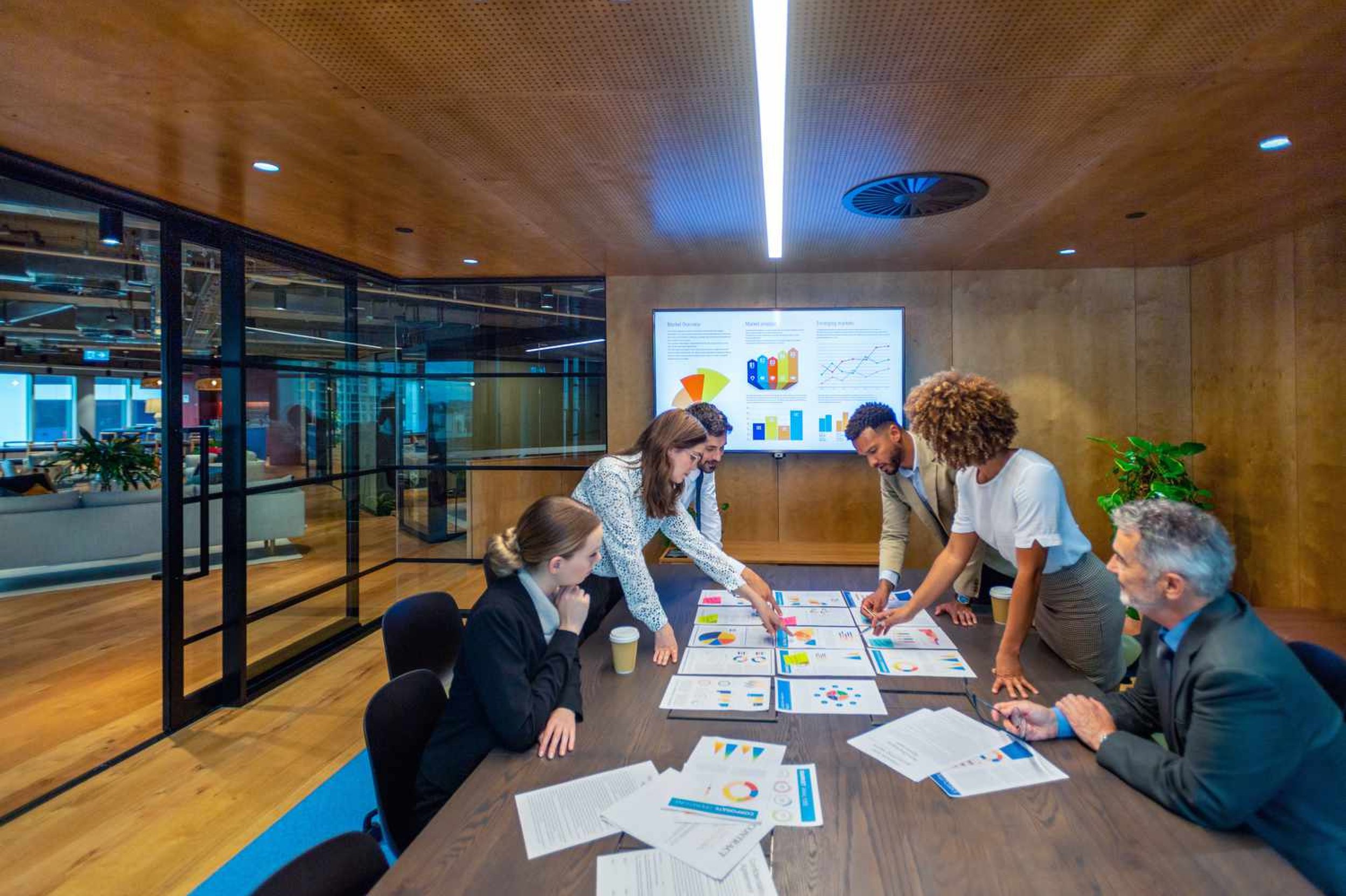
LinkedIn is a social media platform for networking and career development. While it is a hugely popular site, it is not without its shortcomings. One complaint I heard was that there was too much information to scroll through on the home page. The following is a case study on a possible remedy.
The Problem
LinkedIn users must sort through content on the homepage
to find what matters to them. I believe a more categorized homepage would increase user interest and engagement.
Project Type: Add a Feature
Project Focus: To organize the homepage so users can get to relevant information quickly.
Platform: Existing
Industry: Professional networking and recruitment software
Role: UX/UI Designer with feedback from mentor
The Solution: To separate information into tabs to increase interest and engagement.
Tools: Figma, Maze.co, Discord
Duration: October 2023 - December 2023

The Journey Ahead
This project organizes the LinkedIn homepage so users can find their content quickly. Below is a table of contents
Table of Contents
Competitive Analysis
Survey
Affinity Map
How Might We
Task Flow/User Flow
Low-Fidelity Wireframes
High-Fidelity Wireframes
Usability Test Results
Affinity Map, Post-User Testing
Final Results, Wireframes
Final Thoughts
Research
Competitive Analysis
To begin, I wanted to know how current competitors’ use and organize their feeds. Learning the company’s strengths and weaknesses of their feeds were also important.
by ranking content based on a set of criteria
by predicting which content is relevant to user and placing it higher on feeds
Facebook organizes feeds:
businesses able to target specific audiences based on demographics, interests, and behaviors
Highlights of feeds:
The site is not overseen by the company, which permits harmful sites that can threaten public safety
A number of privacy breeches
Lowlights of Feeds:
by people users follow
by encouraging users to follow specific topics, which can focus their feeds
X organizes feeds:
Highlights of feeds:
Provides real-time information sharing
Rebranding is not finished, leading to confusion and uncertainty.
Lowlights of feeds:
YouTube organizes feeds:
by users’ interests
YouTube has a large, global audience which can help small businesses
YT can drive traffic to your website or other social media channels
Highlights of feeds:
YT can delete or take down a site without reason
YouTube has many rules for posts, and breaking them can lead to violations.
Lowlights of Feeds:
by users’ content based on their feeds
Pinterest organizes feeds:
Highlights of feeds:
The biggest highlight is its ease of use
Pinterest is always changing, which can feel overwhelming
Linked websites are often outdated or have been taken down
Lowlights of feeds:
Survey
Next, I wanted to know how users respond to Linkedin, so I placed a survey on Discord. Here are four of the six responses from the survey. This showed me the types of users of the site and of their reactions to it.
User Survey
-
How do you go about using LinkedIn?
Tell me about the last time you tried to search for a job, network, or read about current events on LinkedIn. What was the experience like?
What other products or tools have you tried out to help with networking, reading about current events or searching for jobs.
Have you paid for any of these other products or tools?
What is your opinion of LinkedIn homepage?
What do you like/dislike about the number of feeds you receive?
Would you like a more organized format to your feeds? Why or why not?
Why are LinkedIn’s feeds important to you?Description text goes hereDescription text goes here
Affinity Map
With data collected from the survey, I organized it into an Affinity Map under the following categories:
Impressions of LinkedIn - What were their overall impressions of the site?
Impressions of Features - What features do they enjoy the most/least?
Usability - What were users overall impressions and how much time did they spend on the app?
Pain Points - What were some frustrations of the app?
Behavior - Why do users use Linkedin in the first place?
Platforms - What other websites do users enjoy?
Two main complaints were that the homepage was cluttered and the feeds weren't personalized. To fix this, I focused on organizing the homepage. Improved organization would result in more personalized feeds and happier users.
Ideation
After completing competitive analysis and gathering user data, I considered ways to improve organization. With users in mind, the following "How Might We" questions were created.
Understand what users need the most.
Learn about their goals/motivations for using the site.
Find out what limits them from reaching their goals.
Understand what makes their experiences good or bad.
Identify if changes/additions would be welcomed.
Identify if the change would add more interest or excitement to their experience.
How Might We
Task Flow/User Flow
I wanted the new organization to be simple and easy to understand. So, I created the following user flow that helps users find key information quickly using tabs.
The last tab was meant to be customizable for a more personal experience, but this idea was not used.
Additional thoughts:
Low-Fidelity Wireframes
Because this case study was about adding a feature to an existing site, there was only a single low-fi wireframe.
The idea developed like this:
At first, I was going to add a feature, using buttons with various labels.
In the end, I used colored tabs to achieve finding information quickly.
Final Wireframes and Testing
High-Fidelity Wireframes
Linkedin is supposed to maintain an air of professionalism, but does it need to be boring? In the beginning, I used colored tabs to add excitement to organization. In addition to creating the tabs, I also created a drop-down for one of the tabs. Below is a sampling of the proposed change.

Usability Test
With a new, organized homepage using colored tabs in place, I wondered how users would respond. A usability test was developed to explore the new changes. The usability test was both moderated and unmoderated using the following two tasks:
-
Click on Sign-In.
Look at the tabs and click on “My City.”
Once on the My City page, click on the dropdown on the tab and highlight “North” for the location where user may want to view their city’s latest updates.
View the “North” location page.
Click on the Education tab.
View the Education page.
Click on the home icon at the top.
-
Click the dropdown on “My Tab.”
Select either Sports or Music.
View the desired page.
Click Home icon in the header.
The moderated test was timed and two friends used my laptop to complete the tasks. The unmoderated test was displayed on the social network, Discord, and four participants used the testing site, Maze.co to complete the tasks.
Affinity Map
The results from the moderated and unmoderated usability tests were compiled in the following Affinity Map. Although relatively anonymous, the unmoderated test provided a timestamp.
Post User-Testing
A few of the comments about the new changes were:
Moderated
Easy
Simple to navigate
Others will find this useful
Useful add-on
Did not want customizable tabs
UnModerated
Straightforward
Like the ability to filter
Others will find this useful
Bright colors overpowering
Choices took me where I wanted to go
Findings:
All participants were able to complete the steps and had the following comments and recommendations:
The overall experience with the proposed changes was positive, however,
The brightly-colored tabs were distracting.
All participants liked the idea of organization as opposed to the hodgepodge feed that is present today.
Recommendations:
Maintain the LinkedIn color palette.
Use icons instead of colored tabs. (This recommendation was not used.)
Final Results, Wireframes
Based on usability testing and post-test Affinity Map of the prototype, it was obvious that changes were needed, and I changed the colored tabs. Originally, I wanted the tabs to change to the familiar LinkedIn blue color when hovered. After some research and testing, I found an easier workaround. Now, users will see the tabs change to the familiar blue color.
The following is the continuation of the iterations.
Main Takeaways
Final Thoughts
LinkedIn is a widely used platform for professionals, but its feeds need better organization. To address this, I added tabs to the homepage, and I discovered that users preferred a simpler, familiar design.
The key takeaways from this project were to maintain the familiar. The other takeaway from this project is that an organizing feature is desired. Adding an organized tab feature will improve this useful site.





















